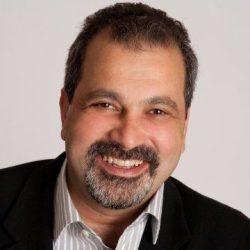
The company recently raised its first external funding, €25 million, in a funding round led by Kennet Partners. I had the opportunity to discuss Screendragon with Clive. I first asked Clive to summarise Screendragon.

Clive replied, “Screendragon is an automated workflow SaaS-based platform that specialises for now, at least, in the advertising and brand marketing world. We are a no-code platform that’s built on a form and workflow tool. We automate end-to-end work, irrespective of the flow.
“Generally speaking, in the agency world, from brief to work out the door, including resource management and capacity planning. On the marketing side wiring together disparate marketing teams within the broader organisation, with the eye towards getting work out the door more efficiently.”
Screendragon is still a private company headquartered in London. Nevertheless, its biggest office is in Cork, Ireland, where it has over 60 employees. Its customers are spread across the globe, with 50% based in North America and 50% in the rest of the world. They are mainly Anglophone nations and Europe. It already has clients working in six different languages and more than 29 countries. It has a growth rate in the 30-40% range over the last three years.
On Vision
What is the vision for Screendragon?
“Our vision is to grow. We want to continue expanding within the agency and marketing world and then into adjacent verticals within marketing brand organisations. Typically, we focus on CPG, but we started branching out into pharma with Novartis and banking with a #1 global bank. We will continue to build out verticals within the marketing world.
“Then we will move into professional services because it’s an absolute no-brainer for us. Our biggest customer is the International Olympic Committee. Based on that, we will ultimately grow into licensing, either consumer licencing or sports franchises, the NFL, NBA, MLB, etc.”
That growth will come from a mix of inbound and outbound sales. The investment from Kennett will help Screendragon to grow these, where Screendragon differentiates itself on its referrals.
Clive noted that although it is a relatively small operation, it has the muscle and quality of a large organisation. It has a long tenure for employees, with many having been at the company for seventeen years. It benefits from the movement of marketing executives and has also attained preferred supplier status from Omnicom and IPG as well as GroupM preferred/approved (WPP), according to Clive.
On product
Like many other firms, Screendragon is investing in AI for its platform. Clive revealed that it is investing in resource management, using data from historical projects to make recommendations for future ones.
Besides resource management, there are development streams for automation to simplify the UX. According to Clive, the team is also working on some further out stuff as well. The vast majority of the R&D is now focused on AI.
On the future
And what do you hope to achieve by the end of 24?
“We expect to continue growth. We project between 36 and 40% growth this year. One, as you can imagine, in a tight environment, as in P&L pressure, increasing input costs, strain on employees, a tough talent market, where most of the players out there are facing some degree of headwinds.
“It’s an environment in which we’ve been playing for a while. We tend to benefit from those headwinds because our value proposition is that we take our time and give back time.”
Clive pointed out how Screendragon differentiates from other solutions. He finds that most customers struggle with process friction. Screendragon, built on its no-code platform, can automate anything.
Importantly, it also makes the platform agile enough to change when a new CMO comes in and wants to alter processes to a new methodology. Instead of ripping out the marketing solution and replacing it, Screendragon is able to quickly build any new processes that are required. It also means that once automated, staff no longer have to spend time administrating processes.
Screendragon aims to benchmark its platform
Clive admitted that to date, Screendragon has not collated the data to show the advantages that this automation is delivering; however, they are working on measuring this going forward. It will mean that it has some significant benchmarks and results of its implementations to share with prospects.
Clive explained, “The second thing is because we are now a no-code platform, we’re able to conform to a customer’s language and way of working. In the agency world, as you can imagine, every agency is different; even from office to office, they’re different. Then, within an agency, every client has some obnoxious CMO like me, who will come in and go; this is our way of working.
“You need to be able to structure the platform and the workflow to 100% mimic their language and flow. The degree to which you vary from that is the degree to which you have process friction. We’re able to conform to any organisational language. Those two things differentiate us from our direct competitors.”
International growth
The funding announcement revealed that Screendragon was growing quickly in Ireland and was also looking to expand in the US, where Clive is leading the initiatives. Surely, to grow in the US, you also need more boots on the ground?
Clive answered, “We are definitely going to aggressively build that tech team in Cork. We are equally going to be aggressive in building a US based sales and marketing organisation. So those two are our priorities.
“We also do see a lot of wide open space in Europe. We’re not going to focus on Asia in the near term because building out boots on the ground there is going to be a little tough.”
On Partnerships
The funding will only go so far. To expand effectively in the US, you will need a lot of boots on the ground. Another way to achieve growth is using partnerships, is that something you will invest in?
“There is no question that we need a sophisticated and nuanced partner strategy. We don’t have that yet. We do have a number of small partnerships that we’ve started a journey on. The most advanced one is Credera, which sits within the Omnicom group, and we’re going to be scaling that.
“We are in talks and have our first project with a US-based partner. It hasn’t been announced, but we have a shared client that we work with. We are in talks with two others right now.
“We will develop those implementation partnerships. We’re also looking at partnerships with players within the ecosystem. If you think about us, we wire together the ecosystem in a marketing or an agency organisation.
Looking for more than just technology partners
“On the marketing organisation side, there are a number of players, whether it’s in the digital shelf, content creation, or data analytics that our clients use. We want to institutionalise and standardise the use of those players.
“For example, Vidmob. Vidmob is a data-driven capability that measures and identifies what content works better. On a high level, they’re a really impressive company. We share a lot of customers, the number one complaint of the CMO is that I can’t get my organisation globally to implement them, and so we will automate them into the workflow.
“We have started to have conversations, but they are very nascent. The priority is going to be building our implementation partnerships, but we are having conversations with a number of players on the ecosystem side who say we will integrate with you and essentially make you a preferred API into our system so that we can add value to the client, and it’s a win-win.”
What about SIs like Deloitte, as those relationships will enable you to scale?
“No question, there is opportunity there. Up until now, we haven’t felt like we had the resources, discipline and back-end documentation to deploy that. What we’re going to do is use the Credera relationship to build that muscle.
“Once we work through the pain, we’ll go after the big boys and big girls because you’re dead right, that’s where the scale is going to happen. We are, interestingly, in discussion with Deloitte on a very specific project, but not a partnership. If that goes well, I’m sure it will evolve into a partnership.
On challenges
What are your challenges?
“We have one singular pain point, which is we’re not known, and we don’t have enough awareness. We don’t have enough marketing money, and we don’t have boots on the ground and that’s why we did this deal. Kennet has invested a meaningful amount of money for us to go and fund that and grow.
“We’ve never taken on institutional money. This is the first time we’ve done it. Now we have, a really supportive partner who’s in it to win with us. They put a chunk of money in the bank, and we’re going to go and spend it intelligently. We hope that it will yield the benefits or you will be talking to someone else.”
On priorities
What are your priorities?
“Build a sales organisation, a marketing organisation, a customer success organisation and a sophisticated, meaningful one and execute the hell out of it. We don’t have a very sexy strategy. It’s build these capture capabilities, be maniacally focused on execution, and don’t lose sight of the business we have. We have an amazing client list and my biggest worry is as we grow, we drop the ball with the people that got us.”
If you’re only building a customer success organisation, now, how do you maintain the relationships with your existing clients?
“We are a relationship-based, consultative-based organisation. The reason we win is that we get in, and start a relationship with a customer, solving their problems and coming to the table with people who understand the space they’re in, who’ve done this for 17 years, who have come from this world and who speak the language. We put people in the business, and they stay in the business.
“What I’m talking about is taking that to the next level, or two levels, more sophistication and, most importantly, scalability. What’s on my mind, is how do I make this a scalable, repeatable proposition that I can drive growth and not lose the essence of who we are, which is this level of intimacy.
“We have customer success people; we don’t call them that, but they behave that way. At the core of customer service is building relationships of trust and delivery and understanding at a very intimate level how your client works and where you can be useful to them.”
The book question
What was the latest book you read?
“When Breath Becomes Air”. It’s beautiful (by Paul Kalanithi – Amazon Aus, UK, US). My son wants to be a neurosurgeon, and it’s an incredibly powerful book that my son turned me on to.
“It’s about this phenomenal guy who thought of studying English and ended up becoming a Chief Resident Neurosurgeon and finds out he’s got cancer. He has got months to live. He writes this book that tragically his wife finishes.”
What is your take out for business from it?
“Three things. One, never lose your authenticity because once you lose that, you’ve gone. Two, maniacal focus and commitment to the end game. Three, continuous learning. I mean, you should read this book. It’s just an absolutely beautiful book.”


























